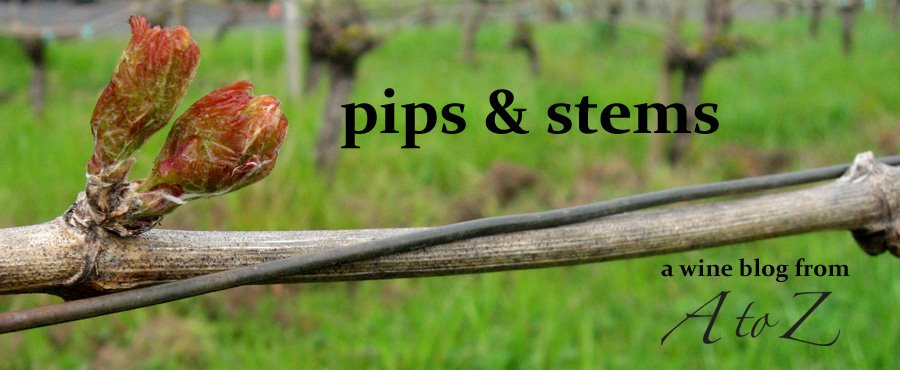Tasting the same wines day in and day out gives you a palate for a particular style, and the blind tastings we offer our staff help to shake us out of a particular flavor rut, make sure we're not getting too comfortable with our own preferences. Similarly the wine education classes and seminars we offer remind us that there are wine worlds outside of our (albeit beautiful and world class) particular wine region. Which is a good thing to remember right now, in particular, as our stunning valley hosts the International Pinot Noir Celebration this weekend.
- Pinot Plastic Forbes
According to an October 2007 study from the American Association of Wine Economists, the production and distribution of wine is responsible for roughly 6.3 billion tons of greenhouse gas emissions, or nearly 1% of global emissions annually. That's equivalent to the emissions generated by 1 million passenger cars each year, with nearly all of that impact coming from the transportation of the wine, not the production of it. - Aging Gracefully The New Zealand Herald
In this age of instant gratification, most wines are polished off within 24 hours of purchase. Few of us now take the time to cellar our wines, but those with the restraint to squirrel away some well-chosen bottles can reap rich rewards in following a wine down a fascinating path from youthful exuberance to mellow old age. - Route of the Golden Vine – a Chardonnay journey of discovery South African Wine News
Meredith determined that the finicky and pedantic Pinot grapes (Pinot Noir, Pinot Blanc and Pinot Gris) all have the same DNA. It is thought that the cross-pollination of the two varieties resulted in the first Chardonnay vine in Burgundy, which has been determined as the birthplace of this variety. - Rosé: A perfect Summer Sipper The Statesman Journal
Rosé, such a pretty, refreshing, tasty wine, it's no wonder the recent years have seen a dramatic increase in popularity. But is it just a trend, a passing fancy, waiting for the next fad to come along and take its place? Not according to some noteworthy Oregon winemakers. - Messages in a Bottle: Ode to the Blended Wine Vinography
Growing up in America cripples us wine lovers from the very start. Sure, we are born into the land of boundless opportunity, where the dreams and hard work of a vineyard worker can result in the ownership of a winery twenty years later. But unless our parents provide us with a very particular upbringing, we grow up thinking that wine isn't wine unless it has the name of the grape on the front of the label.
America and its wine lovers have a varietal bias. - Sip and Sup amid the Magic of Marlborough The Australian
The wineries transmute their grapes into the sauvignon blanc that has seduced the world, chardonnay, pinot gris and pinot noir, methode traditionnelle sparklers and, increasingly, aromatics such as riesling and gewurztraminer, so there's plenty of opportunity to taste the terroir. But there's more, and in particular the good food that goes hand in glove with committed wineregions. - Oregon and California pinot noirs are very different The Statesman Journal
The California wine industry begot the Oregon wine industry. And in return, one might say, Oregon's premium pinot noir industry begot California's premium pinot industry. … But California cool, is not Oregon cool. How different are they? Let's explore, comparing two giants of their respective states. … While completely different, and enjoyable in their own right, these two sets of wine are separated by one distinctive characteristic. The Oregon wines have slightly better acidity, making them more food friendly. - Keeping Close to Home with Eco-Friendly wines from Oregon The Oregonian
Of the many forms of green-farming being embraced by Oregon vintners, biodynamic agriculture is perhaps the most exciting and least understood. This holistic approach draws its methods from traditional agrarian societies. By treating the farm as a single, self-sufficient organism, practitioners of biodynamics preserve habitat, conserve water and make a negligible carbon footprint.







